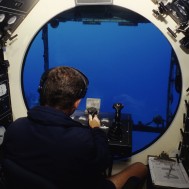Seals are essential to keeping submarines and submersibles air- and water-tight. Without good seals, submarines would be unable to stay afloat or be submerged. Considering the fact that submarines can stay underwater continuously as long as the crew doesn’t need to come up for supplies (up to three months in some cases), it’s obvious why reliable, durable seals are vital to maintaining the structure and function of submarines.
A small leak can quickly turn into a big problem underwater, so ensuring the efficacy of all the seals onboard is a top priority. Engineers are always working to improve seal technology so that leaks aren’t a concern in any application. Modern submarine seals are designed for the unique challenges of the ocean, so they are created to be resistant to vibration, corrosion, pressure, and shock.
Submarines can dive to depths of hundreds or thousands of feet below the surface of the water. The pressure at these depths is much greater than the pressure at the surface. Trieste, a Swiss designed, Italian built submersible was the first manned vessel to brave the Challenger Deep in the Mariana Trench in 1960. At its lowest point, the craft reached depths between 35,000 and 36,000 feet.
Submarine seals are designed to help maintain internal pressure and withstand the external pressure of the water surrounding the submersible. The pressure of the water is exerted on all sides of the submarine, increasing with depth. At the lowest point in the ocean, atmospheric pressure exceeds 16,000 pounds per square inch. For reference, the atmospheric pressure in the average home is approximately 14.7 PSI. In contrast, the average submersible doesn’t dive nearly that deep into the ocean. Military craft hang out around 980 feet below the surface, and manned research vessels regularly go as low as 14,700 feet.
In addition to pressure, submarine seals must also withstand vibration, corrosion, and shock. Vibration is caused by the submarine’s powerful engines and can lead to seal failure. To combat this, submarine seals are designed to have a low coefficient of friction. Put simply, this means that the seal components and the application it is applied to can move against each other without binding or sticking. The low friction also helps to reduce wear and tear on the seals.
Corrosion is another issue that must be taken into account when designing submarine seals. The salt in seawater is corrosive and can cause seals to degrade over time. To combat this, corrosion-resistant materials like silicone, fluoro-silicone, viton, EPDM are used in the construction of underwater seals like o-rings. Low-carbon steel, bronze, non metallics, and stainless steel alloys are often used in additional seal components and glands.
Finally, shock is another factor that must be considered when designing submarine seals. Submarines are often subjected to shock due to contact with the ocean floor or other objects in the water. To counteract this, submarine seals are designed to be flexible and able to absorb shock without breaking.
While many types of seals are used on submarines, o-rings are among the most essential. O-Rings perform many functions on a submarine, sealing things like joints, hatches, and valves. As referenced above, o-rings are made of elastomeric materials, which means they can stretch and compress without permanently deforming.
Submarines and submersibles are key tools in military applications, as well as vessels for scientific exploration and discovery in our oceans. The seals that keep them functioning, and the engineers who develop and install them, can be easy to forget about (assuming everything is working properly!). So next time you’re aboard a submarine or learning about new deep sea discoveries, take a moment to appreciate all of the seals that are keeping things dry.
Looking for more info on underwater seals?
Get in touch with one of our engineers!
